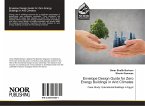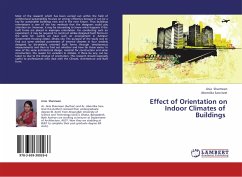Winter is one of the longest seasons in the northern countries and in general, living in a cold climate means higher energy consumption. Though global warming has an influence on climate, winter will be around for quite some time. Therefore more attention should be paid to making cold seasons more comfortable and provide protection from cold weather, winds and precipitation. This book takes a closer look at how design in a climate with harsh winter conditions can support sustainable design solutions. The project site is the main pedestrian street that runs through a small town called Tartu, in Estonia. Through literature this book identifies pertinent cold climate design issues; what can be done in a streetscape to improve pedestrian comfort and safety; and factors that contribute to successful pedestrian winter environments. The book also takes a closer look at solar energy, materials, natural infiltration, and how public art can be used as a means to raise public awareness of ecological issues. Combining the knowledge from literature and the long history of the site a schematic design is proposed for the street as an outcome.







